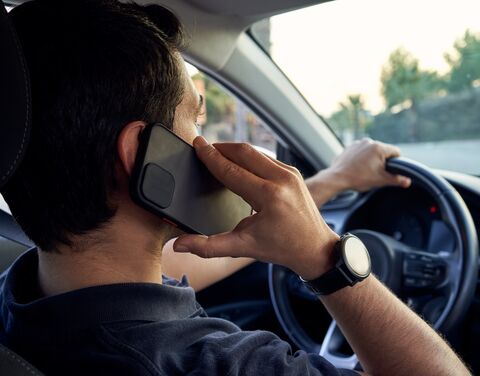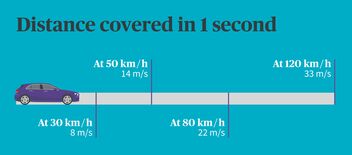
The smartphone – a constant companion and often the center of our attention. Even when driving. Many people are not fully aware of the risks that using a phone behind the wheel entails.
The multi-talented device combines countless useful things that we can now always have at hand. This entices us to multi-task. Just quickly sending a message, entering an appointment, or sending off an order. All in passing. Young people, in particular, often use their cell phone while driving – and not just to talk on the phone.
Most traffic accidents are caused by distractions. And there were distractions before cell phones. But with the spread of these devices, inattention in road traffic has taken on an unsettling dimension.
Someone unexpectedly hits the brakes, an object on the street, a deer: A brief glance at your phone is all it takes to overlook something crucial: In one to two seconds, your car covers a considerable stretch of the road, which you drive “blindly” to some extent while you are looking at your phone. If you are unlucky, you will find a completely new situation when your eyes return to the road. And you lose more valuable seconds of reaction time by the time you start to break and swerve.

See, hear, smell, taste, touch: With too many stimuli all at once, the human brain is quickly overwhelmed. For this reason, the risk of an accident multiplies with every distraction. The Swiss Council for Accident Prevention BFU (in german) researched which activities pose the greatest risk for driving safety. Leading the list is reaching for objects, followed by using a phone, and using electronic devices such as a radio or GPS.
You are driving on the freeway. There is a car in front of you that is obviously driving unsafely and which isn’t staying in its lane. Taking a look to the side when passing it confirms your suspicion: The driver is busy with their cell phone. – Trials in a driving simulator show that using a phone at the wheel is comparable to driving under the influence of alcohol: Typing a text message limits your ability to drive about as much as drinking two to three glasses of wine (1.1% blood alcohol level).
Letting yourself be distracted while driving is not only irresponsible, but rather also risks legal consequences. By law, drivers are obligated to pay full attention (in german) and have to have control over their vehicle at all times (in german). Inattention is punished – not only if it leads to an accident, but also in routine police checks.
Using your phone while driving in Switzerland is deemed to be a violation and is punished with a fine of CHF 100. Using a loudspeaker to talk on the phone is permitted. But: If you are distracted by the conversation and driving inattentively, you are still violating the law – beyond a fine.
Writing a message or similar while driving puts others at great risk and is categorized as a serious violation of traffic rules. Legal proceedings follow which lead to a term of imprisonment or a financial penalty (Art. 90 no. 2 of the Swiss Road Traffic Act; in german). Costs and fees are added, and possibly even an entry in the criminal record.
As soon as criminal proceedings have been initiated, the authorities notify the cantonal department of motor vehicles. This office decides in an administrative proceeding whether – depending on the severity of the violation – a warning is issued or the driver’s license is revoked.
The right of recourse and contractual recourse allows insurance companies to reclaim money from you if you have caused property damage or personal injury as the result of grossly negligent conduct. That is usually the case with using a phone while driving. Gross negligence can have far-reaching consequences for you. Accidents with personal injuries, in particular, quickly lead to very high costs (for information on reductions to daily benefits in the case of gross negligence, see Art. 37 para. 2 of the Accident Insurance Act; in german).
To protect yourself in the event of recourse, you can take out supplementary coverage for “gross negligence” for a small fee. This add-on is definitely worthwhile – also as an add-on for personal liability insurance.
Young drivers with little experience are especially at risk. But even routine can be risky – namely when it leads to lower concentration levels. That’s why it is decisive to take every drive seriously and prepare conscientiously. Get information early on about weather, road conditions, and visibility, as well as traffic. And take care of everything necessary before you drive off. Ideally, you should put your cell phone out of reach.
We are accustomed to being able to connect our smartphone to the car. But now it’s for more than just a loudspeaker and music: CarPlay (iOS) and AndroidAuto are the names of interfaces which transfer information between smartphones and infotainment systems. They mirror the smartphone on the car display. Important functions such as the GPS, phone, news, calender, notes, etc. can be used conveniently via voice control, steering wheel control, and touchscreen.
The advantage: Those who cannot or do not want to do without their phones while driving have an easier time – and can drive safer. The disadvantage: The new possibilities entice users to multi-task more, which in turn makes driving more dangerous. Takeaway: Not everything that is possible and allowed is also reasonable. Driving without the distraction of your smartphone remains the safest way to drive.